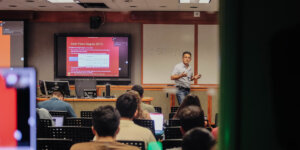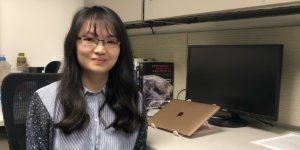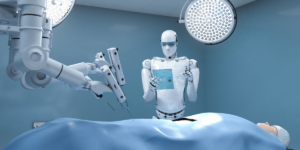
PHOTO/ PEXELS, ANNA SHVETS.
They say you are what you eat. What about what you breathe? In the wake of climate change, air pollution is a critical area of concern not just for the environment, but for individual long-term health. That is why, almost two decades ago, Constantinos Sioutas created a personal air sampler—a device lightweight enough to be carried by individuals into whichever spaces they visited to assure them of their safety. This sampler has recently been adopted by the U.S. Department of Homeland Security as a reference method for COVID-19 sampling.
Aerosols are the subject of Sioutas’ research and the link to our biological well-being is one he helped forge early on in Los Angeles by emphasizing the importance of understanding the diversity of particles that make up our surroundings. Stationary monitors often do not tell the full story of personal particulate matter exposure, Sioutas, Fred Champion Professor in Civil and Environmental Engineering at the USC Viterbi School of Engineering, said. The “Sioutas Impactor,”—as the sampler his team developed, manufactured by SKC is called—collects personal samples and separates them into five size ranges that can be analyzed for particle mass particle size and particle chemistry.
“This is important because depending on how big or small the particles are, you’ll know where in your lungs they will deposit,” Sioutas said.
The impactor was funded by the Mickey Leland Foundation—funded by a consortium including the U.S. EPA—and was highly valued because of its convenient size, low noise level, its ability to classify for the first time as a personal sampler ultrafine particles, and its high sampling flow rate, which allowed for multiple samples to be taken in a short period. It was also key in helping bridge the gap between epidemiological analysis and air pollution, and was used in Milan to sample the air in the Santa Maria delle Grazie church, where “The Last Supper” is displayed, to determine the degree to which the notorious wintertime air pollution of that city poses a threat to this world heritage masterpiece by Leonardo da Vinci.
Just last year, this sampler was used to better understand the spread of COVID-19, an unexpected but logical adaption, Sioutas said. “COVID-19 is nothing more than an aerosol,” he said. “We can look at it the same way as all other particulate air pollutants.”
At a time when most of the world still didn’t understand the airborne nature of COVID-19, Sioutas’ former Ph.D. student Zhi Ning was conducting research in Wuhan hospitals. Ning, associate professor at the Hong Kong University of Science and Technology, used the personal sampler, because of its convenience for field deployment in harsh environments and easy operation by medical staff. A subsequent paper, published in Nature, confirmed what we all now know but did not expect at that time: the virus is not actually in the huge droplets we expel when coughing or sneezing—like with the common cold—but actually in the sub-micrometer range.
“The sampler helped them realize that 90 percent of infections don’t spread the way they imagined. Even asymptomatic people—when they talk or exhale—release small particles into the air. This paper was so important, because it showed that we’re not talking about 200 microns. These particles are two microns, or even less, and unfortunately, that makes it [coronavirus] more contagious,” Sioutas said.
Particle size is important to understand, Sioutas said, because it is directly linked to what types of protective measures will be most effective in varied surroundings. For instance, a face mask might work well for a certain super-micron range particles and then be less effective for smaller particles. In fact, most face masks capture less than 30-40% of particles smaller than about three micrometers, Sioutas said.
Sioutas said when he was co-director of the Southern California Particle Center, Los Angeles researchers were just beginning to link air pollution and adverse health effects. Now with the study of airborne virus particles using his sampler, he said it’s important that aerosol scientists and engineers are brought into the fold earlier in situations like today’s global pandemic.
Sioutas said: “A sampler like ours can make people aware of how a disease like COVID-19 can spread. Actually measuring data in places where there is a high concentration of infections allows you to gain more understanding of the disease and even a little bit of a predictive ability. Measurements can prove to authorities and policymakers which areas are the most concerning and help pinpoint where we should focus most of our efforts when taking preventative action.”
Published on May 26th, 2021
Last updated on May 26th, 2021













